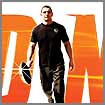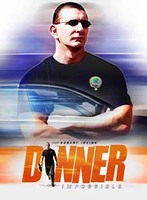 The Food Networks' "Dinner: Impossible" is a unique blend of a standard reality show and a cooking theme. The show is produced by Shooters Post and Transfer, and Marc Summers Productions. I am the primary mixer on the show and one of the three owners and founders of Shooters Post and Transfer, based in Philadelphia. The show is centered around its' Hero Chef, Robert Irvine. Roberts's weekly challenge is to compose gourmet meals in not so gourmet environments. Our producers keep ratcheting up the challenge to get Robert to stumble. This keeps me and my crew on our toes.
The Food Networks' "Dinner: Impossible" is a unique blend of a standard reality show and a cooking theme. The show is produced by Shooters Post and Transfer, and Marc Summers Productions. I am the primary mixer on the show and one of the three owners and founders of Shooters Post and Transfer, based in Philadelphia. The show is centered around its' Hero Chef, Robert Irvine. Roberts's weekly challenge is to compose gourmet meals in not so gourmet environments. Our producers keep ratcheting up the challenge to get Robert to stumble. This keeps me and my crew on our toes.
 Everything is wireless and unscripted. Typically the majority of the show is captured at a "home base" kitchen set where the show more resembles the typical style of a normal cooking show, but cooking as fast as they can. Here I record Chef Irvine, his two sous chefs, and any number of drop-in guest sous or celebrity guests who may show up at any time.
Everything is wireless and unscripted. Typically the majority of the show is captured at a "home base" kitchen set where the show more resembles the typical style of a normal cooking show, but cooking as fast as they can. Here I record Chef Irvine, his two sous chefs, and any number of drop-in guest sous or celebrity guests who may show up at any time.
The kitchen set can be chaotic. It is shot with at least 4 cameras that are constantly moving, shifting their focus from one character to the next. The kitchen environment can be extremely noisy, making it a soundman's nightmare.
From the beginning, I decided that this was going to be a double system show. The cameras only have onboard mics with Denecke SB-2a time code sync boxes attached to them, no wireless receivers… no tethers. This gives the maximum amount of flexibility for the camera department as well as the sound department.
The show is recorded over an 8 to 12 hour duration onto a Fostex DV-824 8-track, non-linear recorder in conjunction with a backup Fostex PD-6 with an EX-12 docking station. I use a multitude of Lectrosonics 400 series radio mics to send each character to their own individual track. The PD-6/ EX-12is used mainly to record the action during disk changes in the DV-824. Since the action never stops, neither can the audio recording.
Some episodes require "home base" to move several times during the shoot day. The whole system can live on two Senior Magliners and be relocated in just a few minutes.
This is a road show. We've done this show on a desert island, an ice hotel, a cruise ship, and even a moving train. We never know what the producers will come up with next.
The Dinner Impossible sound department also employs a mobile 2nd unit to cover all the action that takes place away from the home base kitchen. This is an off the-shoulder operation that requires coverage of multiple characters for multiple cameras.
For the first four seasons we used a PD-6 to perform all the recording duties of the mobile unit. For the past two seasons, they've been using the newer PD-606 and it has performed very well. The PD-606 is vast improvement over the PD-6 while still maintaining the look and feel of the PD series recorders. Having a full-sized optical drive is a great advantage and being able to mount the internal HD or optical drive is another huge advancement.
Track-arming is more flexible as well. We can arm any combination of tracks and the recorder will shift all the metadata into its proper place. New battery management software combined with the ability to seamlessly switch between the two onboard batteries has taken the stress of running out of power out of the equation.
The Fostex recorders' ability to record to hard disk and DVD-RAM simultaneously is a great feature. The disks come out of the recorder and are immediately copied via a laptop computer to a LaCie Rugged external drive.This hard drive is the media that is delivered to production editing. The files are copied to the network at our editing facility at Shooters and quickly returned to me for the next episode. The DVD-RAM disks become back-up and are delivered to The Food Network at the completion of the season.
Our producers came to me and said they needed to transcribe a large portion of the show, with time code. Ok... the mobile unit already has a half a dozen radio receivers, along with a boom and support gear.
Add a transcription recorder? NO.
I decided to use the stereo bus tracks of the PD-606 to record the transcription tracks. The PD-606 can record 6 analog inputs with a 2-track stereo buss mix: eight total channels. I also use the PD-6/EX-12 in a 2 track mode to record the menu planning segments for transcription tracks only.
Back in post, the two stereo bus channels are separated out from the production tracks via a Fostex program called BWF manager and then converted to MP3 files with time code via another very handy piece of software: BWF-Widget Pro written by Courtney Goodin. Both pieces of software can process the audio files in batches so it is a pretty fast efficient process. The files are sent to our transcriber over FTP and a few hours later, our producers have time-coded transcripts in their hands.
Back at the "home base", all eight channels of audio are fed from the recorder to a rack mounted remote monitor station at our video village via a Muxlab CAT5 Balun. In the rack is an eight-channel monitor mixer, Lectrosonics T1 transmitter, a Fostex RM-1 rack mounted stereo monitor, a Kramer Electronics digital delay, and a video quad split generator.
Using the eight channel monitor mixer, our director can dial in any of the eight microphones he or she wants to listen to at any time. The show is "called" live by the director who monitors video assist feeds that are transmitted via the Boxx System, WIFI to the village monitors. WIFI inherently has a 13 frame latency so a digital delay on the monitored audio is needed to resynch picture and sound for video village.
The four video signals also arrive to the village via a Muxlab CAT5 balun system. The CAT-5 system is inexpensive, works very well and gives us virtually unlimited range between video village and our recording station. I've strung CAT-5 from one end of a passenger train to the other so we could monitor kitchens at opposite ends.
We are now in our 6th season of Dinner Impossible and the missions in the kitchen continue to evolve challenging the audio department even more. The experience we have gained on this very technical and fast paced shoot has proved invaluable on other projects.
